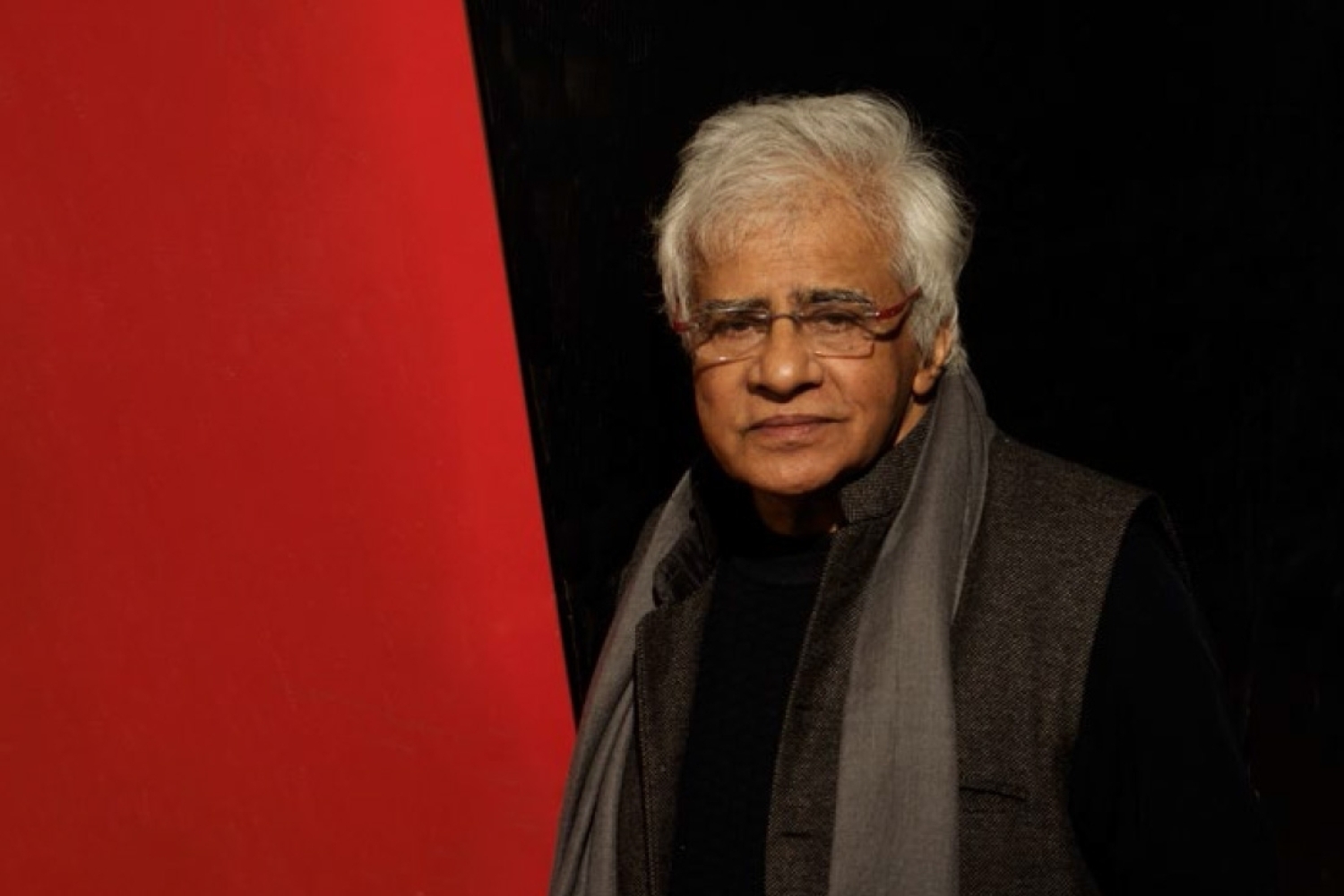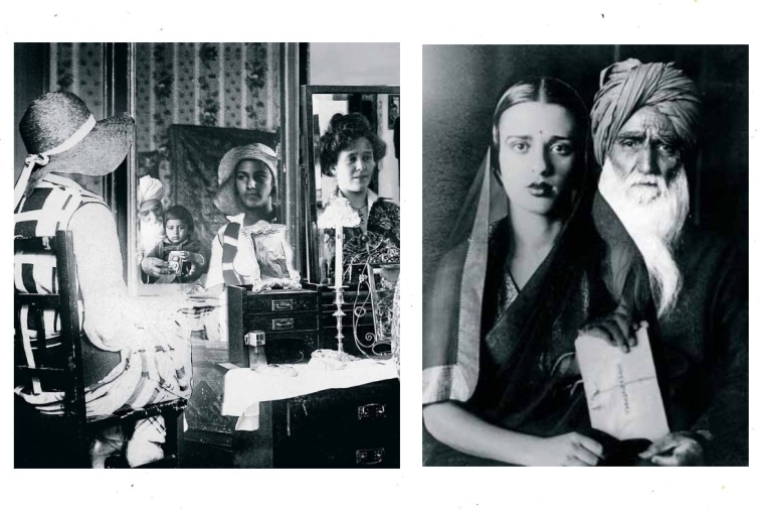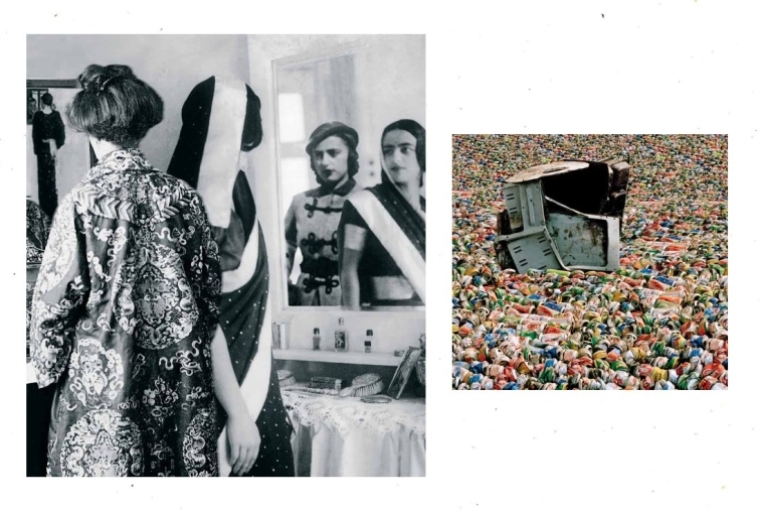
Photography: Sharad Shrivastava

Photography: Sharad Shrivastava
This article is an all exclusive from our extensive archive. We are revisiting this interview on the sad demise of the artistic maestro that was Vivan Sundaram.
Progressive in thought and varied in practice, the experimental and radical Vivan Sundaram is an ‘artist as activist and archivist’ and one of the few from his generation who has consistently created conceptual art infusing various other disciplines. A questioning artist, over the years he has created his own artistic language that goes beyond art, evokes dialogue, creates curiosity, commands interaction, relates to social and political history, and above all it provokes thought.
You were one of the first artists from your contemporaries to branch out into conceptual art, photography, video art, and installation art. What intrigued you to explore these mediums?
I am a big believer in time and moment. We are talking about the early 90s – collapse of the Soviet Union, a new economic order, television etc – there were enormous changes taking place both nationally and globally. I had travelled to New York and I found that the nature of art practice in our country was very restricted to painting alone. Even in Southeast Asia, Africa and Latin America there were radical changes in art and I felt that the time had come. It was the moment when one could shift, it was in the air and I did. In a broad sense that was the starting point.
What kind of reaction did you receive?
My paintings sold well because I came with a reputation but when I did a series after the Gulf War where I used engine oil and charcoal, people joked and wondered if it would last but that was still in the tradition of graphic and it still sold. The next show Collaboration/ Combine in which I made sculptural objects brought in very different elements, I worked with architects and I started using photography. In fact, I made a six-foot stone column weighing 6000 kilos but on the face of it were photographs. This piece was a curatorial show of unknown photographers who today are some of India’s top photographers, including the likes of Dayanita Singh, Ram Rahman and Ketaki Sheth. It was the beginning of an attempt to strike a dialogue with people in other disciplines, to question the notion of the single author, of participation and critiquing that uniqueness that only a hand can produce. Suddenly in art, things and objects in the world that exist could be included and employed, which is actually an old strategy coming in from the West. I felt that there were all these things that were being kept away and in our home ground we were more conservative.
What sparks your creativity?
I went to study in Baroda and in the 60s it was a very radical and happening place that encouraged new ideas. Then, I went to study in London again in the 60s and that was also happening on a global level. Both these locations informed me. Politics, moving towards leftist thought and Marxist positions, critical radicality has always been part of my blood stream. To question the dominant in whatever artistic way one does and to always continuously position oneself from what has become ossified or static in some way. And that sparks my creativity till date.
What is it about the public space that excites you and why do you feel that site-specific installation art should be destroyed?
Site-Specific Installation should be destroyed for obvious reasons, documentation is its afterlife. For example: My largest, most ambitious project of my life that took me a whole year of research was about Bengal, Modernity and History. The installation itself took three months to construct and it was exhibited at the Durbar Hall at the Victoria Memorial. Once the exhibit was over then obviously I couldn’t carry it away and bring it here because I didn’t have any equivalent space and therefore it’s been destroyed. There are many things that should be destroyed. Another installation titled Trash, where I had constructed a city out of garbage that was 20ft by 60ft long took three months to make because of the content of that work – mapping the city, creating a plan, it was really about fragility and the vulnerability of materials and structure which don’t last very long and are not allowed to last because they are illegal, bulldozed, and thrown away. The installation was about that, where there is a basic entropy and chaos and finally it all comes down. So, I made a video of that coming down and collapse.

R:Father - Daughter, 19” X 14”, 2001. (Umrao Singh, Shimla, Mid 1940s. Amrita, Shimla, 1904)
On a more personal level, you are the nephew of the legendary Amrita Sher-Gil and you have also compiled a book on her. What is it that has fascinated you about her life?
Amrita Sher-Gil was my mother’s sister; she died before I was born. Of course she fascinated me as she has done many. I always had an interest in organizing her retrospective and had been editing her letters for a while. I then realized that I wanted to interpolate text and image through these letters and that’s why the book took so long. I have taken my time but I believe that the political and personal are not antithetical to each other. If you have aspects of yourself that you feel is worth excavating into and representing for public and the public is interested then you pursue it. The Sher-Gil family is the largest painting I ever did. I was self-conscious about blowing up this family but it was because of its largeness that it actually got a structure, objective and was not sentimental. Instead it made a statement about painting and looking, about entering and about relationships. I was also for many years involved with Kumar Shahni, the filmmaker, to make a feature film on her life and we travelled all over – Pakistan, Paris, Hungary etc. So that was another part of this ongoing journey and he quite affected me and insisted that we don’t make a documentary as her life had very intriguing elements of fiction. The book is constructed in that way, there are many layers, visual and cross references that is not demanding but makes it all so attractive and accessible.
What is your understanding of the Sher-Gil family?
I have made Umrao Singh a pioneer of Modern Indian Art and Devika Daulet-Singh of Photoink constructed it into a book. I have contributed in writing a section on history of Modern Indian Photography. Naming my grandfather the pioneer does raise questions but people have gotten convinced and recognized the honour. In the same way it became more about the relationship between Umrao Singh and Amrita as they were creative people of a kind. Her mother, Marie Antoniette was also creative she was a musical person, my mother was too but they both were failures. Umrao Singh was not successful either but his photographs gave him a centrality to hold his ground. The letters that Amrita wrote her mother have a very delicate kind of tension and at times are quite expressive. There is an underlying violence between mother and daughter. Also the family came from an aristocratic class and they are meant to be well to do – that’s why the book is also a lot about money and how the mother constantly enquired of how much money her daughter spent. There is a kind of deep pathos because on the surface of the family there is a lot of glitter but they are cash strapped and are talking of it constantly.
The show of the Sher-Gil archive was done in the mid 90s and with that I had already started the process of working with images. There is an image that is more like a strip that has been created without manipulation. On one level there is Umrao Singh since childhood and below is Amrita’s life. When you look from top to bottom then there is a kind of relationship, seduction and eroticism. The way she is being looked at and how he looks at himself. In a sense I have narratorized those pictures without really manipulating them, it’s only the display. The logic of engaging in a more complex narrative became possible when the digital came about and that’s how Re- take of Amrita took form.
And finally, tell us about your forthcoming show?
In the last two decades I have moved across almost all kinds of disciplines and I have very consciously not done the same thing again. I have chosen not to get stuck to any one discipline. I have done video, and then I moved to installation art, then photography, and so on. It’s about finding myself across different mediums and if there are some themes or issues then they also cross over. As part of that crossing over I am now working on a show that has surprised me as well. I had done an earlier show called Shelter and one of the earlier definitions of a garment is shelter. I already have a trajectory in my own work in terms of Trash and the concept of readymade. I thought why don’t I take that as a kind of dominating principle and more or less stick to it and make garments out of found objects and trash. I didn’t know anything about fashion so I went to NIFT did a module course there and, ofcourse, there is a long history of art and fashion. The show is going to be exhibited at the Rabrindra Bhavan and it will be a sort of performance art piece. You will have to come and see a 40-minute fashion show after which the models and audience will move to another hall. In this space, fashion photographers will be photographing the art works and it will be interactive and the live- performance act will be more engaging. It is a challenging series and there is both nervousness and excitement.
Words Shruti Kapur Malhotra
Date 29-03-2023

R: Metal Box, Original Print Bed Ward, Installation, Steel, Old Shoes, 100 X 188.5 cm, 2008 String, Wire, Bulbs, 2005